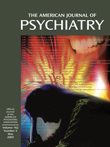I wrote this book review on September 11, 2004, 3 years after the attacks on New York City and the Pentagon. In that 3-year span, I treated three patients who were within five blocks of the World Trade Center buildings at the time of the attacks, as well as survivors of Myanmar atrocities, rapes, murder attempts, domestic violence, physical violence, and kidnappings. In reaction to their problems, and the many problems facing the United States and the world, I found amazing comfort in the Iowa Hawkeyes beating the Iowa State Cyclones. Like many of my compatriots, I find myself focusing on physical and mental pursuits that are healing rather than obsessing on reopening healing scars of grief. This is the core thesis of this very skillfully and insightfully written “handbook” on PTSD overseen by Raul Silva, a veteran of September 11.
With 28 contributors from New York City and six from Lebanon, this book’s 15 chapters cover every conceivable nook and cranny of PTSD, a much ignored psychiatric condition defined in 1980 by DSM-III. Topics covered include 1) epidemiology, 2) resiliency and vulnerability factors, 3) risk factors, 4) legal aspects, 5) neurobiology, 6) etiology and pathogenesis, 7) clinical findings, 8) gender differences, 9) intergenerational links between mothers and children with PTSD spectrum illness, 10) assessment, 11) differential diagnosis, 12) childhood versus adult PTSD, 13) treatment of children exposed to trauma, 14) clinical case examples, and 15) PTSD in children and adolescents following war.
In a world where a hundred dollars does not buy a decently well-written textbook anymore and a million dollars buys a house in Los Angeles that Midwesterners would not pay $80,000 for, this compact little handbook is worth more than its weight in gold.
This is from a reviewer who has been through World War II, who has witnessed murders, rapes, and other acts of violence in a country in postwar transition, and who has been treating hundreds of victims of such atrocities since 1967.
Silva shows an uncanny sense of reverence and irreverence for traditional views of PTSD and, in the process, gives coherent meaning to the often conflicting and muddled views of this disorder, which all mental health professionals deal with. The aggregate impact of this handbook is in shedding light not only on what makes humans break down but also on what makes humans bounce back. Silva and his group, ironically, have made more sense of psychiatry in one volume than all the fragmented, topic-focused books I have read over the past 30-odd years.
By repeatedly focusing on 1) reexperiencing and the need to be retraumatized, 2) avoidance and numbing, and 3) hyperarousal, the contributors give new meaning to the cyberspace term “URL” (uniform resource locator) by allowing clinicians and patients alike to access language and information sources and solutions that actually interface and speak the same language.
For years, I have been struggling with the phenomena of “assortative mating” and “repetition compulsion neurosis.” Kowalik’s chapter on neurobiology and Linares and Cloitre’s chapter on intergenerational links between mothers and children with PTSD spectrum illness made sense of all of these.
More importantly, the effectiveness of an eclectic approach to psychiatric problems versus devotion to a “one-size-fits-all” managed care mentality wins out. Once upon a time, we psychiatrists were exposed to a semiotic approach to all things human. This meant never neglecting the overarching importance of symbols in human nature. “Perception is reality” was once a mantra for most of us. This handbook takes us back to that mantra once again. Outcome studies and studies of the phenomenon called resiliency all point to the importance of engineering and shaping such symbolic reframing of experiences as the one key factor to healing—and perduring. Rising above the incomprehensible and overwhelming to emerge triumphant and stronger provides validation of Frederick Nietzsche’s “That which does not kill me, makes me stronger.”
The last chapter by Fayyad et al. is a masterful summation of the whole body of PTSD research: “It is not as bad as it sounds; and it can be as bad as we make it sound.” I give this handbook a five-star rating.

